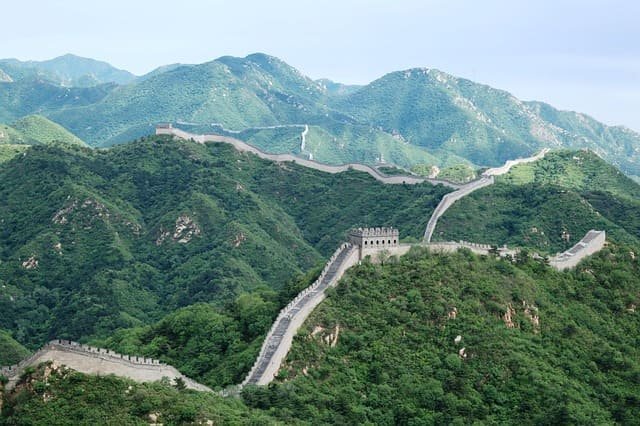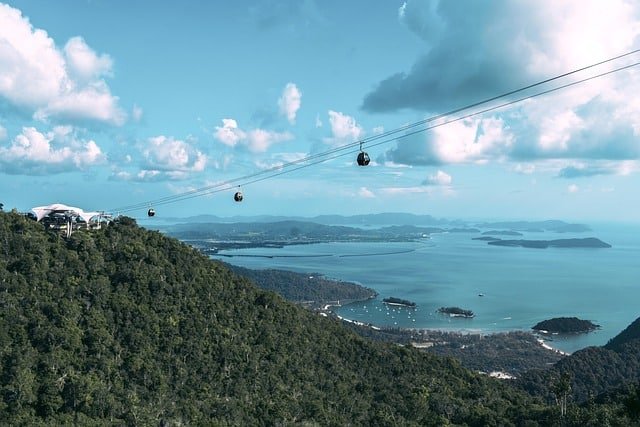Asia is a continent of wonders, offering a rich mix of ancient history, vibrant cultures, stunning landscapes, and modern marvels. With its diverse attractions, Asia has become a top travel destination for millions of visitors worldwide. But what is the biggest tourism in Asia? The answer is not as simple as naming one place; rather, it involves exploring the largest and most visited tourism sectors in this vast and fascinating continent.
Understanding the Biggest Tourism in Asia
When asking, “What is the biggest tourism in Asia?” we must consider several factors, including the number of visitors, economic impact, cultural significance, and global influence. Asia is home to some of the world’s most iconic tourism industries, such as historical tourism, religious tourism, nature-based tourism, and modern city exploration.
1. Historical and Cultural Tourism
Asia boasts a rich cultural heritage that attracts millions of tourists each year. Some of the most visited historical sites include:
- The Great Wall of China – One of the Seven Wonders of the World, this ancient structure draws millions of tourists annually.
- Angkor Wat in Cambodia – The largest religious monument in the world, a masterpiece of Khmer architecture.
- The Taj Mahal in India – A symbol of eternal love and a UNESCO World Heritage Site.
- Kyoto’s Temples in Japan – A city with over 1,600 temples, each offering a glimpse into Japan’s traditional past.
- The Forbidden City in Beijing – A grand imperial palace that tells the story of China’s powerful dynasties.
- Petra, Jordan – A stunning archaeological site that reflects the rich history of the Middle East.
- Bagan, Myanmar – An ancient city filled with thousands of Buddhist temples and stupas.
- Ayutthaya, Thailand – A former capital with impressive ruins and historical significance.


These destinations highlight Asia’s rich cultural and historical significance, making heritage tourism one of the biggest tourism sectors in Asia.
2. Religious and Spiritual Tourism
Asia is the birthplace of many of the world’s major religions, including Buddhism, Hinduism, Islam, and Shintoism. Religious tourism plays a crucial role in attracting millions of visitors. Some of the most important sites include:
- Mecca and Medina in Saudi Arabia – The holiest sites in Islam, drawing millions of Muslim pilgrims annually.
- Varanasi in India – A sacred Hindu city along the Ganges River, known for its spiritual rituals.
- Lumbini in Nepal – The birthplace of Buddha, visited by Buddhist pilgrims from around the world.
- Shwedagon Pagoda in Myanmar – A golden Buddhist stupa that stands as a spiritual landmark.
- Borobudur in Indonesia – The largest Buddhist temple in the world, a major pilgrimage and tourist site.
- The Golden Temple in India – The most important Sikh pilgrimage site.
- Mount Kailash in Tibet – A sacred peak in Hinduism, Buddhism, and Jainism.
- Adam’s Peak in Sri Lanka – A significant religious site attracting pilgrims of multiple faiths.
Religious tourism is a defining aspect of Asia’s travel industry, contributing significantly to local economies and cultural preservation.
3. Natural and Eco-Tourism
Nature lovers flock to Asia to experience its breathtaking landscapes, ranging from lush jungles to towering mountains. Some of the top destinations for eco-tourism include:
- Mount Everest in Nepal – The highest peak in the world, attracting climbers and trekkers alike.
- Ha Long Bay in Vietnam – A UNESCO-listed natural wonder with limestone islands and emerald waters.
- The Maldives – A paradise of white sand beaches and coral reefs, a top destination for luxury travelers.
- The Great Himalayas – Spanning across several countries, offering stunning trekking and adventure opportunities.
- Borneo’s Rainforests – Home to diverse wildlife, including the endangered orangutan.
- Komodo National Park in Indonesia – Famous for the Komodo dragon and pristine marine life.
- Sundarbans Mangrove Forest in Bangladesh and India – Home to the Bengal tiger and a UNESCO World Heritage Site.
- The Gobi Desert in Mongolia – A unique landscape with dramatic dunes and nomadic culture.


Eco-tourism continues to grow in Asia as travelers seek sustainable and immersive experiences in nature.
4. Urban and Modern Tourism
Asia’s megacities are some of the most visited places in the world, offering a perfect blend of tradition and modernity. The biggest tourism in Asia includes urban tourism in cities such as:
- Tokyo, Japan – A futuristic metropolis known for its advanced technology, anime culture, and historical landmarks.
- Bangkok, Thailand – A vibrant city with bustling markets, ornate temples, and an exciting nightlife scene.
- Shanghai, China – A global financial hub with iconic skyscrapers and a thriving cultural scene.
- Dubai, UAE – Famous for its luxurious lifestyle, futuristic architecture, and desert adventures.
- Seoul, South Korea – The heart of K-pop, innovative fashion, and historical palaces.
- Singapore – A melting pot of cultures with cutting-edge attractions and green spaces.
- Hong Kong – A dynamic city known for its skyline, markets, and cultural diversity.
- Mumbai, India – A city of contrasts, home to Bollywood and historical colonial architecture.
These cities showcase Asia’s economic growth and influence, making urban tourism one of the largest contributors to the travel industry.
5. Food Tourism
Food is an essential part of Asia’s tourism appeal, drawing travelers eager to taste authentic dishes. Some of the best food destinations include:
- Thailand – Known for its street food, including Pad Thai, Tom Yum, and Mango Sticky Rice.
- Japan – A paradise for sushi, ramen, and traditional tea ceremonies.
- India – Famous for its diverse cuisine, from spicy curries to sweet desserts.
- China – Home to a variety of regional dishes like Peking Duck, Dim Sum, and Hot Pot.
- South Korea – The birthplace of Korean BBQ, Kimchi, and Bibimbap.
- Vietnam – Renowned for Pho, Banh Mi, and fresh spring rolls.
- Malaysia – A mix of Malay, Chinese, and Indian flavors creating unique dishes.
- Indonesia – Famous for Nasi Goreng, Satay, and Rendang.
Food tourism continues to thrive as visitors explore the culinary delights of Asia’s diverse regions.
6. Beach and Island Tourism
Asia is home to some of the most stunning beach destinations in the world. Some of the most visited islands include:
- Bali, Indonesia – A top destination for surfers, honeymooners, and wellness retreats.
- Phuket, Thailand – Famous for its nightlife, crystal-clear waters, and luxury resorts.
- Boracay, Philippines – Known for its powdery white sand beaches and vibrant nightlife.
- Jeju Island, South Korea – A volcanic island offering stunning landscapes and cultural sites.
- Langkawi, Malaysia – A tropical paradise with lush forests and pristine beaches.
- Maldives – An exclusive island escape with breathtaking underwater experiences.
- Palawan, Philippines – Recognized for its hidden lagoons and marine biodiversity.
- Andaman and Nicobar Islands, India – A remote paradise with untouched beaches.
Conclusion: What is the Biggest Tourism in Asia?
Asia’s tourism industry is vast and diverse. Whether exploring ancient wonders, experiencing spiritual retreats, enjoying city life, or relaxing on pristine beaches, the biggest tourism in Asia offers something for everyone. With millions of tourists visiting each year, Asia remains a leading travel destination, continuously expanding its influence on global tourism.
You can read: The best 5 countries in Asia to travel to!

